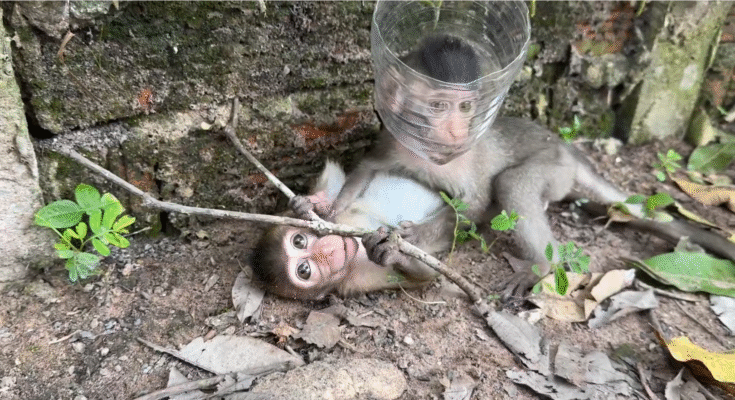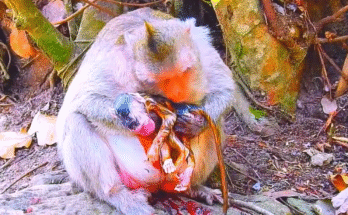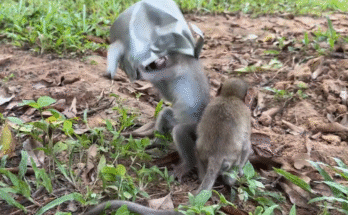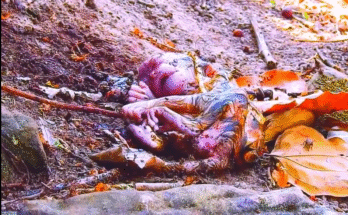In the wild, animals live in their natural habitats, free from the interference of human activities. However, with growing urbanization and environmental degradation, many animals find themselves in precarious situations, often caused by discarded human waste and other hazards. A tragic yet common example of this is the case of a young monkey, captured in an image where it appears to be entangled in a plastic container.
The photograph shows the monkey lying on its back, its head trapped inside a transparent plastic container. The animal seems helpless, struggling to free itself, with its limbs sprawled in an uncomfortable position. The plastic container, which likely once served a human purpose, has become a dangerous obstacle for this innocent creature.
The Dangers of Plastic Waste in Wildlife Habitats
Plastic waste has become one of the most pressing environmental issues today, and its impact on wildlife is profound. Animals often mistake plastic items for food, or they may become physically trapped in them. In this case, the plastic container could prevent the monkey from being able to eat, drink, or escape from predators, greatly reducing its chances of survival. Moreover, plastic waste in the environment can take hundreds of years to break down, meaning that animals can continue to face these dangers for generations.
Human Responsibility
This image serves as a stark reminder of our responsibility to the planet and the creatures with whom we share it. Every year, millions of tons of plastic waste end up in the oceans and forests, posing serious risks to wildlife. Efforts to minimize plastic use, improve waste management, and raise awareness about the dangers of littering are essential steps in protecting vulnerable species like this monkey.
Steps We Can Take
-
Reducing Single-Use Plastics: Individuals can take simple steps to reduce plastic consumption, such as using reusable bags, bottles, and containers.
-
Proper Disposal of Waste: Ensuring that plastic and other waste materials are disposed of correctly, and encouraging others to do the same, is vital in preventing environmental contamination.
-
Supporting Wildlife Conservation: Donations to wildlife protection organizations and getting involved in local clean-up efforts can have a significant positive impact on wildlife.
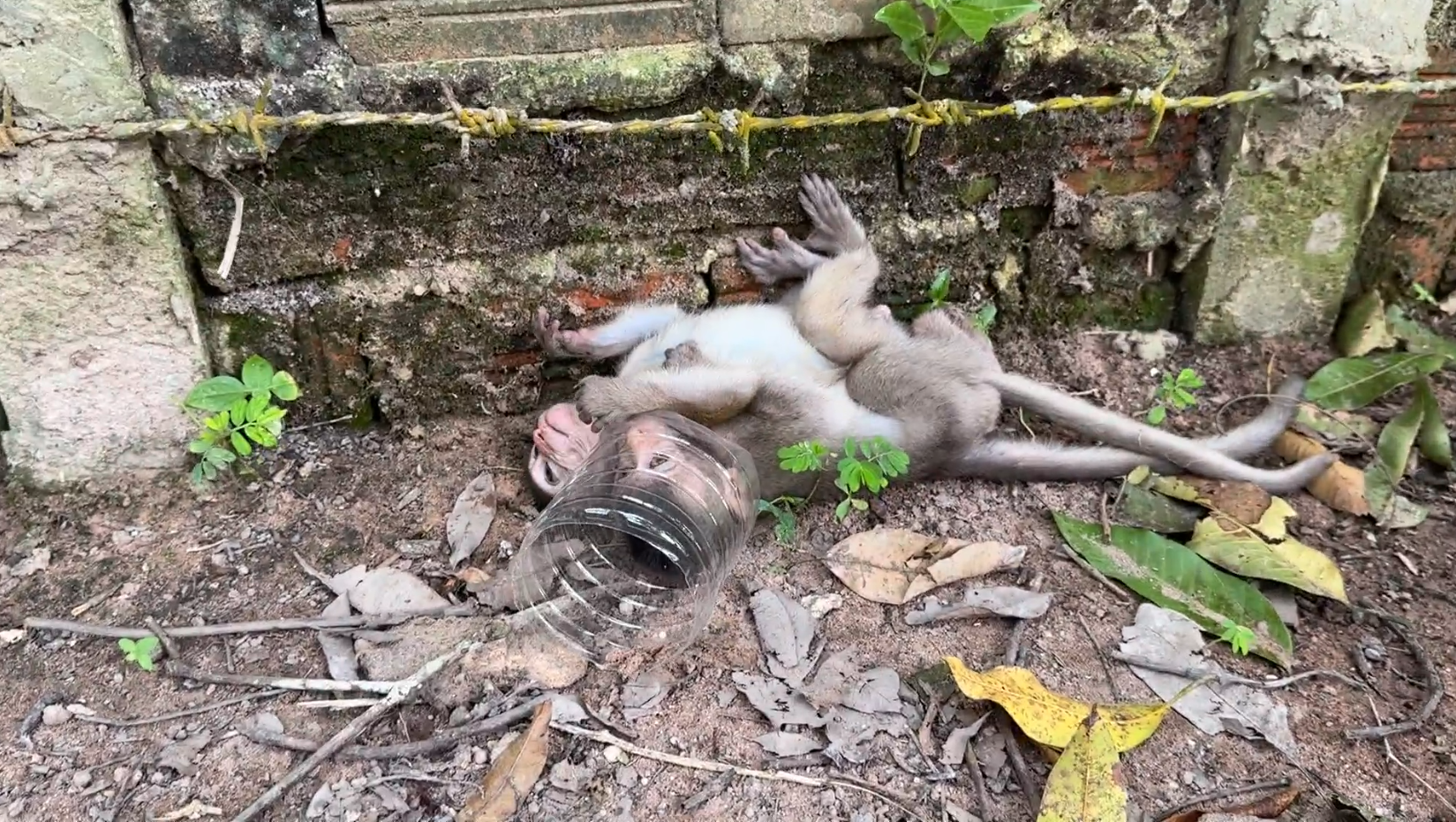
The Struggles of Wildlife in the Age of Human Pollution: A Monkey Trapped by Plastic
In this image, a young monkey can be seen hanging precariously from a brick wall, its head trapped inside a discarded plastic bottle. The monkey, with its wide eyes and curious expression, is likely struggling to free itself from the plastic encumbrance that has interfered with its natural behavior. This picture captures a distressing reality – one where human waste, particularly plastic, is causing havoc in wildlife habitats.
The Growing Threat of Plastic Waste
Plastic pollution is a global crisis that affects ecosystems and wildlife across the world. Monkeys, like this one, and other animals, are often found entangled in plastic objects, which are both a physical and environmental hazard. In this particular scenario, the plastic bottle has become an obstacle for the monkey, who might find it difficult to feed, play, or communicate with others due to the obstruction.
The Harsh Reality of Wildlife Endangerment
For many animals, plastic waste doesn’t just pose a suffocating or entangling danger—it can also disrupt vital activities, such as foraging for food or interacting with their environment. The young monkey’s plight is an example of how pollution leads to unintended consequences, affecting animals that have no control over the environment they live in. What may seem like harmless debris to humans is often a deadly trap for wildlife.
Why It Matters
This image is a stark reminder of why it is essential to take immediate action against plastic pollution. Every year, millions of animals around the world fall victim to the dangers of plastic waste. Many lose their lives due to entanglement, suffocation, or ingestion of plastic particles. The effects on wildlife go far beyond just the physical dangers; it also disrupts entire ecosystems and biodiversity.
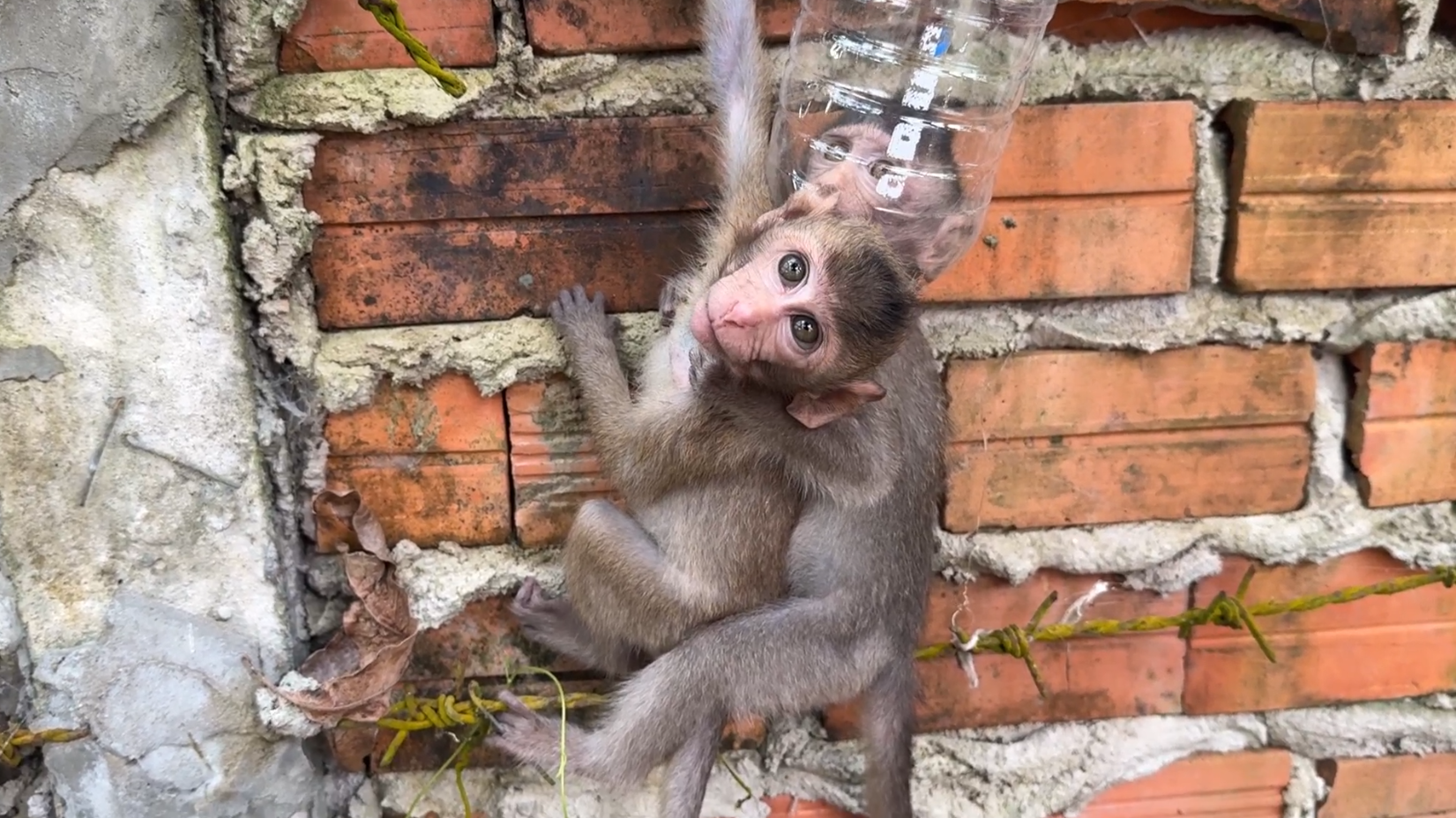
How We Can Make a Difference
-
Reduce Plastic Consumption: Simple actions like using reusable bottles, bags, and containers can make a significant difference in reducing plastic waste.
-
Proper Waste Disposal: It’s crucial to properly dispose of waste, especially plastics, to prevent them from entering ecosystems where animals are likely to come into contact with them.
-
Support Environmental Initiatives: Supporting organizations dedicated to cleaning up plastic waste and preserving wildlife habitats helps to ensure a cleaner and safer environment for all species.
